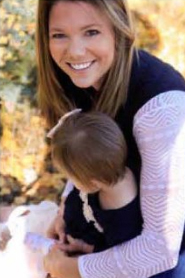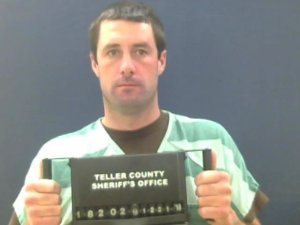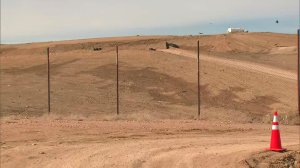It may sound like an impossible task: searching a quarter-acre of a landfill for charred, decomposed human remains three months after a person was last seen alive.

But searchers are hopeful that they will find the remains of Kelsey Berreth and any other evidence that could shed light on her death.
Berreth vanished on November 22 from where she lived near Woodland Park, Colorado. Patrick Frazee, her fiancé and the father of their daughter, is accused of murdering her and tampering with her body.
Frazee’s alleged mistress, who is cooperating with law enforcement, shared information that helped lead investigators to the Midway Landfill in Fountain, Colorado. Searchers will begin sifting through landfill detritus there on Tuesday and continue for at least 35 days until they make it through the area.
This is what we know from Woodland Park police about the search, plus additional insight from forensic anthropologists on what to possibly expect.
How the area will be searched
Beginning Tuesday, Woodland Park detectives and other law enforcement officials will search through an area of 686,805 cubic yards, the department said in a statement, though the primary search area is much smaller at 4,320 cubic yards.
Patrick Frazee, the fiancé of Kelsey Berreth was charged Friday morning with first-degree murder and with solicitation for first-degree murder, in connection with her death. (Credit: Teller County Sheriff’s Office)

Ten searchers are expected to work eight hours a day for 35 days to make it through the primary target area, which is roughly the size of two tennis courts, and nine feet deep. The entire search area is 250′ by 125′ and 25 feet deep — that’s roughly two hockey rinks with 25 feet of garbage piled on top.
The estimated time frame could change based on their progress, Woodland Park Police Commander Chris Adams said.
An excavator will remove the trash to another location and lay it out in lines so that searchers can sift through the material, Adams said.
“It’s a slow, methodical search. We don’t want to miss anything. I think we owe it to Kelsey and her family to — to be as thorough as we can,” Adams said.
The process resembles the procedure that forensic anthropologists use to search areas.
Searchers typically set up a grid and a create subsections, then remove material layer by layer to another area for closer inspection, said Vicki Wedel, an associate professor of anatomy at Western University of Health Sciences in California.
Searchers pass the material through a wire mesh so they can look at it as closely as possible, she said. That’s why it takes so long.
An expert from NecroSearch International, which assists law enforcement agencies in searching for human remains, helped the Woodland Police Department narrow down the search area for Berreth, Adams said.
The department did not reveal any more details about how they narrowed the target landfill search area.

Landfills typically work on a grid system, meaning that material from a particular dump truck or garbage can be traced to particular area of a landfill, said Eric Bartelink, a professor of anthropology in the Department of Anthropology, at California State University Chico.
In some instances, a team searching a landfill for remains can narrow the search area based on where the remains are believed to have come from, he said.
What searchers will be looking for
The woman cooperating with law enforcement, a nurse from Idaho named Krystal Lee Kenney, told police that Frazee beat Berreth with a baseball bat and burned her body in a water trough before disposing of her body.
If true, the degree to which her body was burned could determine the amount of bone and tissue left, three forensic anthropologists told CNN.
Burning a body is harder than it may seem, said Natalie R. Langley, an associate professor of anatomy in the Mayo Clinic College of Medicine and Science in Scottsboro, Arizona.
It often takes an extreme blaze — say, a house fire or burning airplane — burning for hours to significantly reduce a body. Otherwise, a fire could leave behind bones and teeth with sufficient DNA for a positive identification, she said.
A fractured bone could be used to identify a person if medical records are available to back it up, said Eric Bartelink, a professor of anthropology in the Department of Anthropology, at California State University Chico.
Surgical implants, such as joint replacements and pacemakers, often have serial numbers that can be traced to the source, he added.
Other factors that could affect the condition of the remains
Landfills are “decompositional microenvironments” unto themselves, Wedel said, meaning they have active animal and insect colonies that can contribute to reducing human remains to bone faster than in other settings, she said.
But how those insects and animals behave depends on the region and climate, she said.
In some instances, cold weather can slow down the speed of decomposition by slowing down the movements of those organisms, Langley said. The depth of a burial can affect decomposition, too, she added — when burials are cool and deep, scavengers and insects can have a hard time reaching the remains, she said.
Why didn’t investigators search this area sooner?
Law enforcement visited the landfill before, said Adams with Woodland Park Police.
But this is the first time investigators have searched it since Kenney told police that Frazee disposed of Berreth’s charred remains either at a dump or in a river.
“As with any investigation, when you get information from somebody you’ve got to go through and corroborate it,” he said. “That takes some time.”
The couple’s 1-year-old daughter, Kaylee, is in the custody of Berreth’s parents.





















